How to track changes in your codebase?
How to collaborate with others on a project?
How to manage different versions of your code?
Come, let’s find out!
What is Version Control ?
Version control is a system that records changes to a file or set of files over time so that you can recall specific versions later.
Local Version Control
- Many people’s goto choice.
- The approach is to copy files into another directory (perhaps a time-stamped directory, if they’re clever).
- This approach is very common because it is so simple, but it is easy to forget which directory you’re in and accidentally write to the wrong file or copy over files you don’t mean to.
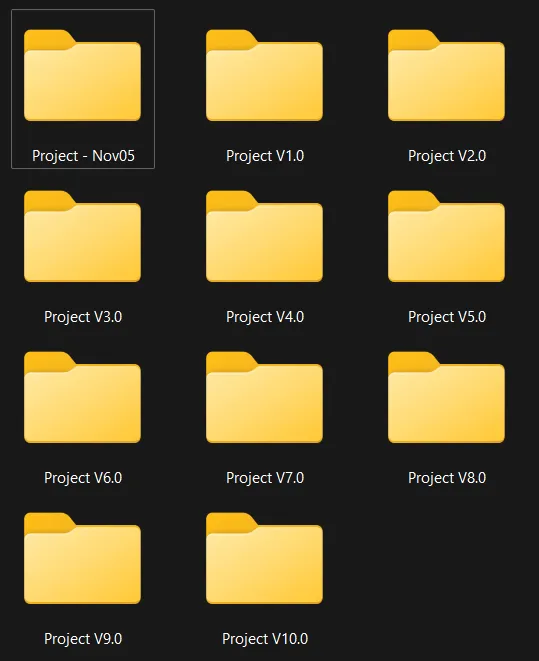
What is Git?
-
By far, the widely used modern version control system!
-
Distributed Developement
For a centralized VCS, each developer gets a working copy that points back to a single central repository. Git, however, is a distributed version control system.
Having a full local history makes Git fast, since it means you don’t need a network connection to create commits, inspect previous versions of a file.
What is Github?
- Git is not the same as GitHub.
- GitHub is a cloud-based hosting service that lets you manage Git repositories.
- Helps share our code with others
Alright, lot of theory, lets code!
Getting Started
- Download and Install
- Open Git Bash
Your Identity
The first thing you should do when you install Git is to set your user name and email address.
git config --global user.name "Andrew Late"
git config --global user.email seeWhatIdidThere@haha.comChecking Your Settings
git config --listGetting Help
# 1
git help <command>
# 2
git <command> --help
#Example
git help addThe PAY ATTENTION moment begins here!
The 3 States
Git has three main states that your files can reside in: modified, staged and committed:
- Modified means that you have changed the file but have not committed it to your database yet.
- Staged means that you have marked a modified file in its current version to go into your next commit snapshot.
- Committed means that the data is safely stored in your local database.
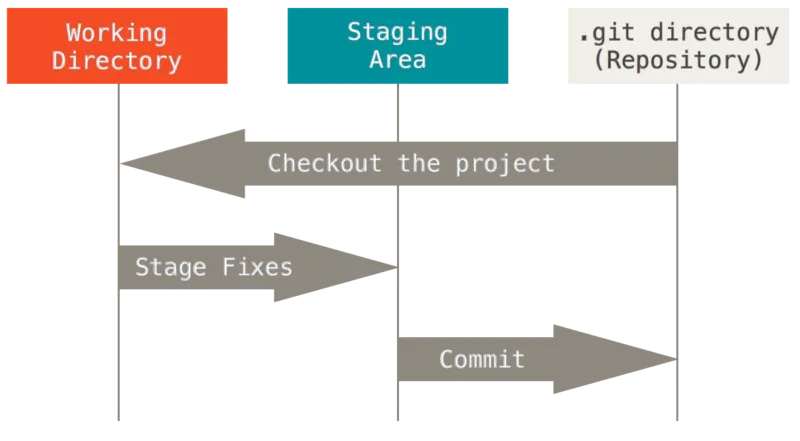
Status of Files
Each file in your working directory can be in one of two states: Tracked or Untracked.
- Tracked files consists of Unmodified, Modified and Staged files.
- Untracked files are everything else.
When you perform git init all files present in the working directly are Untracked.
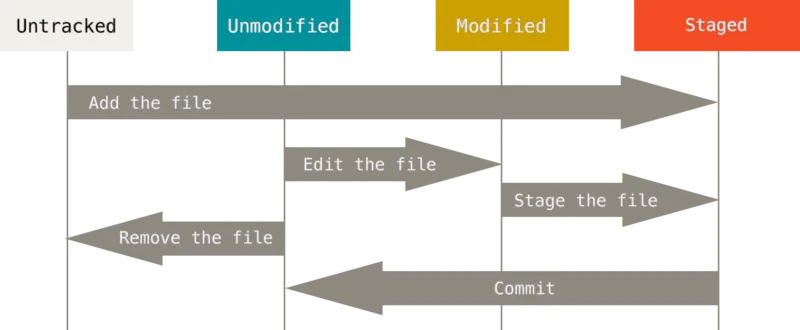
Checking the Status of Files
The main tool you use to determine which files are in which state.
git statusTo do:
- Add a new file
- Now run the git status command
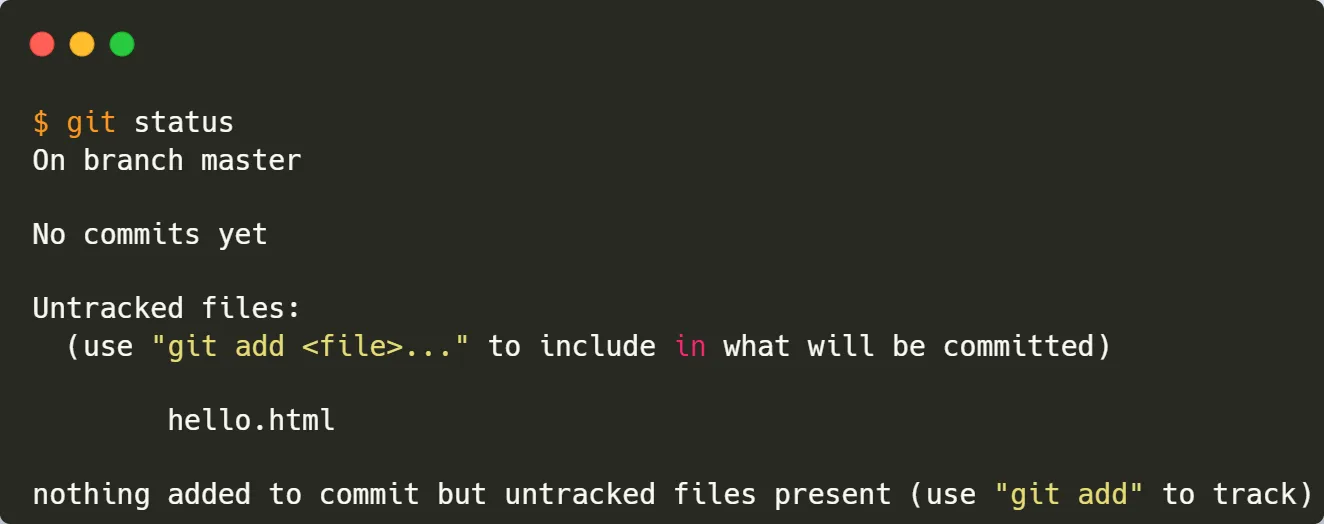
You can see that your new index.html file is untracked because it’s under the “Untracked files” heading in your status output. An untracked file basically means that Git doesn’t know about it and will only track the file if you explicitly tell it to do so.
Tracking New Files
Let’s start tracking the new file that we added.
git add <file_name>
# To add Everything, literally
git add -A
# To make it interactive
git add -pTo begin tracking the index.html file,
you can run the git add index.html command. Now, if you run the status command again:
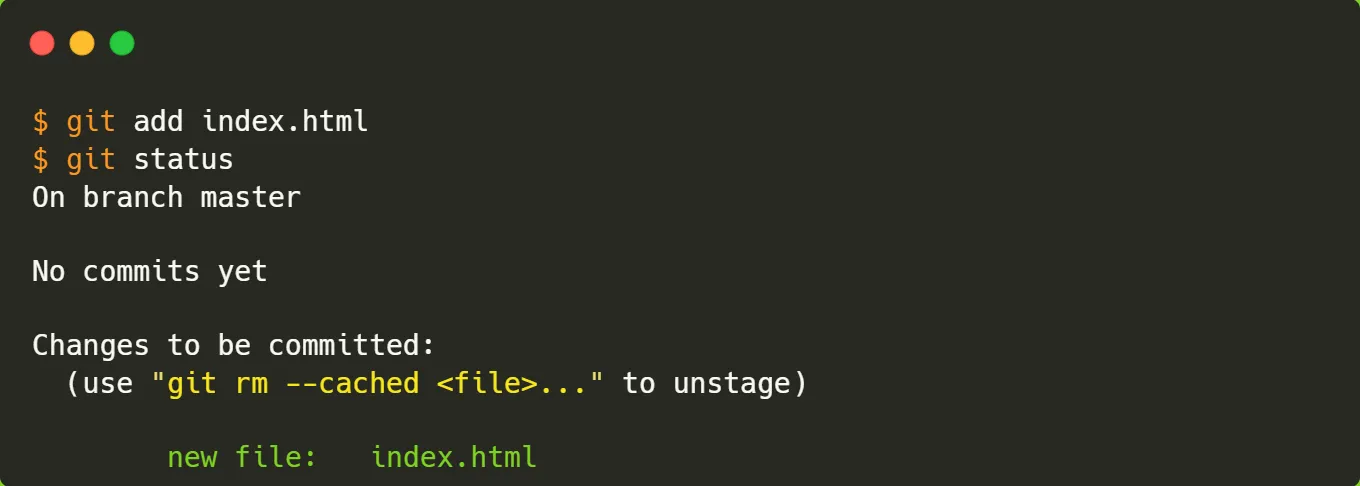
You can see that your index.html file is now tracked and staged to be committed.
Committing Changes
Now that your staging area is set up the way you want it, you can commit your changes.
To commit the changes, the following command is used:
git commit <filename> -m "<Message>"
# Committing the whole staging area
git commit -m "<Message>"In our case, run git commit -m “Added: HTML file”

Observations
Now you’ve created your first commit! You can see that the commit has given you some output about itself:
- Which branch you committed to ⇒
master - What SHA-1 checksum the commit has ⇒
ae8a85c - How many files were changed, and statistics about lines added and removed in the commit.
Let’s create a couple of commits.
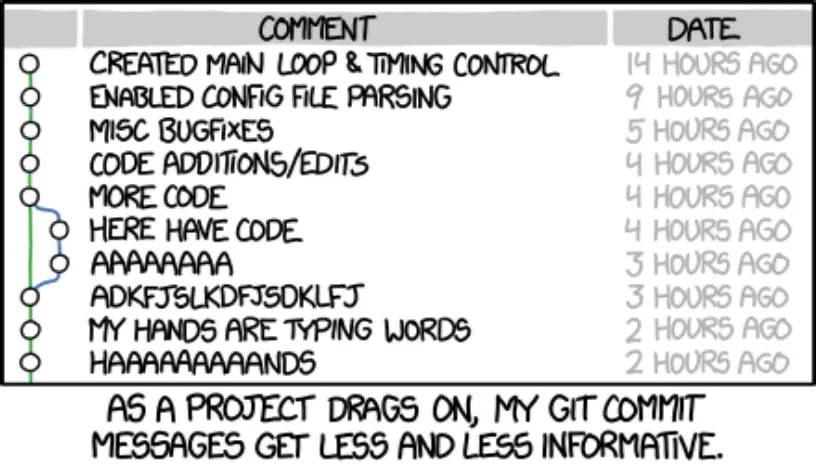
Viewing the Commit History
After you have created several commits, you’ll probably want to look back to see what has happened. The following command helps you do it:
git log
# Also prints the list of modified files, and their details
git log --stat
# Limit to "n" entries
git log -n
# Printing each commit on a single line
git log --onelineLet’s run git log on our machine.
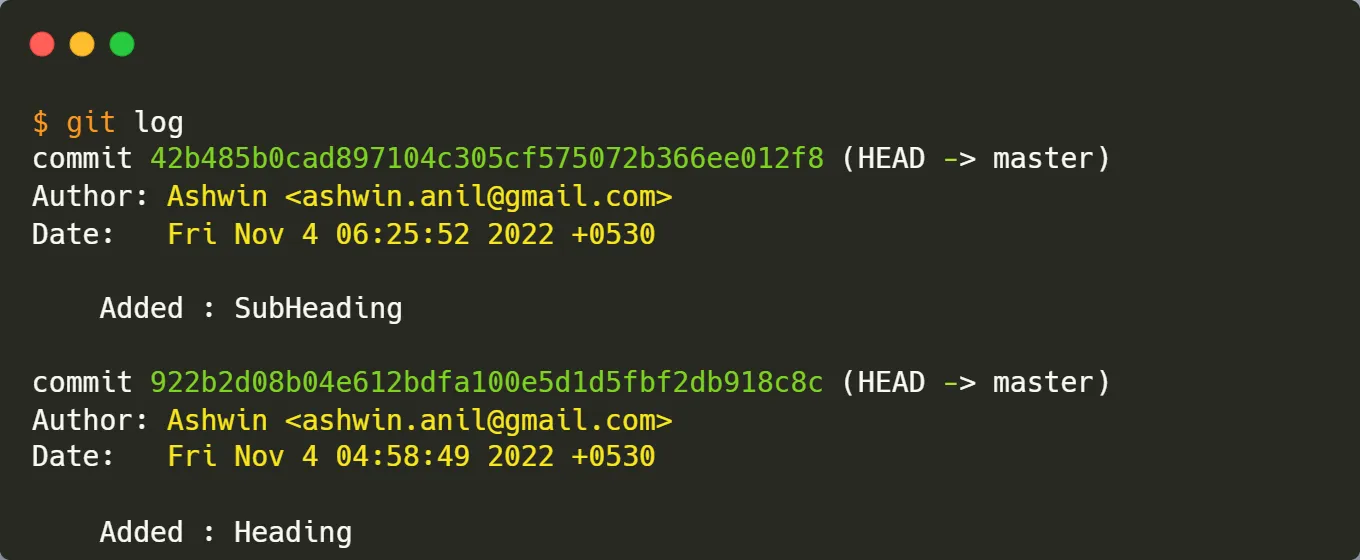
Observations
- By default,
git loglists the commits made in that repository in reverse chronological order (i.e., the most recent commits show up first.) - The command lists each commit with its
- SHA-1 checksum,
- Author’s name and email,
- Date, and
- Commit message.
Removing Commits / Going back
The following command is used to go back:
git reset <commit_hash>
# Reset to previous commit
git reset --hard HEAD^Let’s Understand
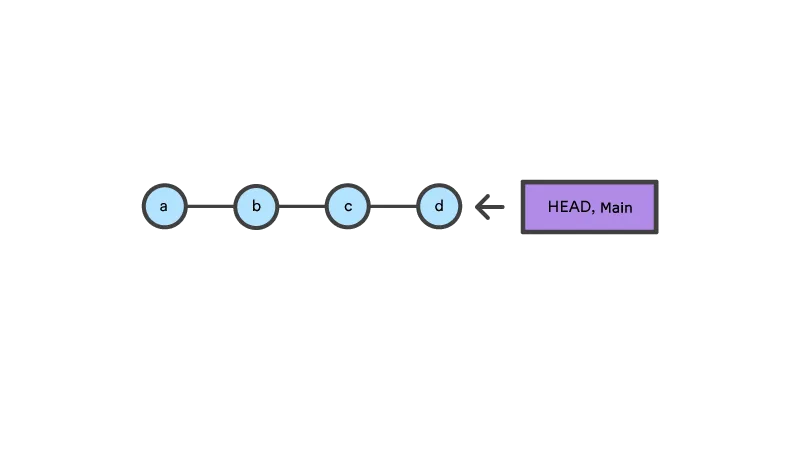
After doing git reset b , now the HEAD and Main are pointing to the commit “b”.
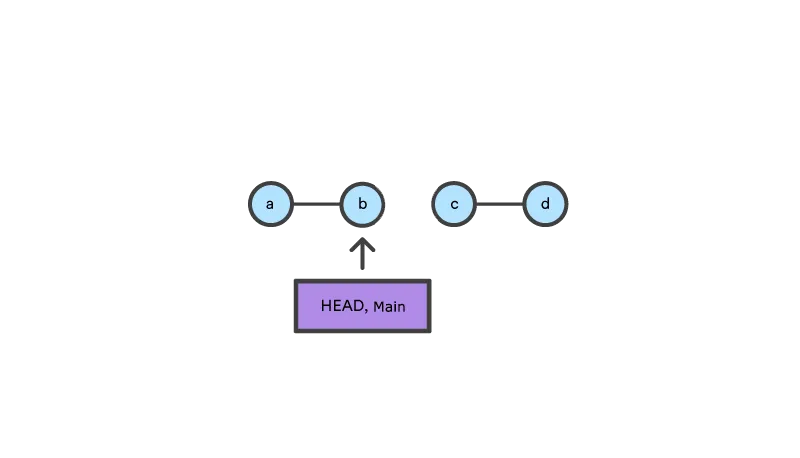
Undoing Things
At any stage, you may want to undo something. Here, we’ll review a few basic tools for undoing changes that you’ve made.
-
Case 1: When you commit too early and possibly forget to add some files, or you mess up your commit message.
If you want to redo that commit, make the additional changes you forgot, stage them, and commit again using the
--amendoption.git commit --amend -m "<Message>"This command takes your staging area and uses it for the commit.
-
Case 2: To unstage a staged file
The nice part is that the
git statusreminds you how to undo changes to them.git restore --staged <file> -
Case 3: Unmodifying a modified file
What if you realize that you don’t want to keep your changes to a file that you just modified?
Luckily,
git statustells you how to do that too.git restore <file>
Conclusion
If you’ve made it this far, you already are acquainted with the basics of Git.
Its totally alright if you don’t remember the commands, just make sure you understand what is happening at each stage and you’ll be good to go.
That’s it for this post.
Thanks for reading!